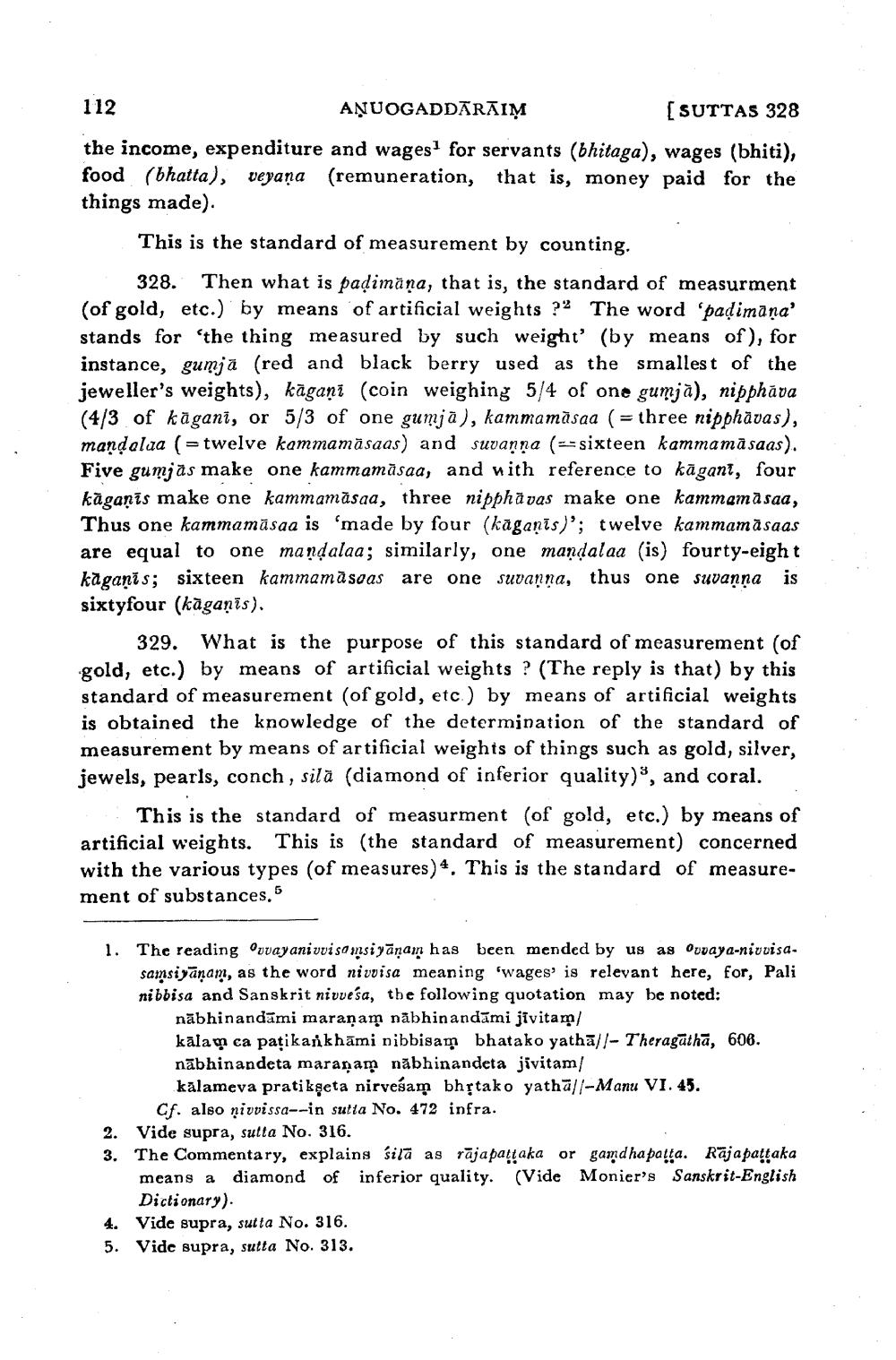________________
112
ANUOGADDĀRĀIM
[SUTTAS 328
the income, expenditure and wages1 for servants (bhitaga), wages (bhiti), food (bhatta), veyana (remuneration, that is, money paid for the things made).
This is the standard of measurement by counting.
328.
Then what is paḍimana, that is, the standard of measurment (of gold, etc.) by means of artificial weights ? The word 'paḍimana' stands for the thing measured by such weight' (by means of), for instance, gumja (red and black berry used as the smallest of the jeweller's weights), kagani (coin weighing 5/4 of one gumja), nipphāva (4/3 of kagani, or 5/3 of one gumjā), kammamasaa (= three nipphāvas), mandalaa (=twelve kammamāsaas) and suvanna (sixteen kammamāsaas). Five gumjās make one kammamasaa, and with reference to kāgani, four kāgaṇīs make one kammamāsaa, three nipphävas make one kammamasaa, Thus one kammamāsaa is 'made by four (kāganis)'; twelve kammamāsaas are equal to one manḍalaa; similarly, one mandalaa (is) fourty-eight kaganis; sixteen kammamāsoas are one suvanna, thus one suvanna is sixtyfour (kagaṇīs).
329. What is the purpose of this standard of measurement (of gold, etc.) by means of artificial weights? (The reply is that) by this standard of measurement (of gold, etc.) by means of artificial weights is obtained the knowledge of the determination of the standard of measurement by means of artificial weights of things such as gold, silver, jewels, pearls, conch, sila (diamond of inferior quality)", and coral.
This is the standard of measurment (of gold, etc.) by means of artificial weights. This is (the standard of measurement) concerned with the various types (of measures). This is the standard of measurement of substances."
1. The reading Ovvayanivvisamsiyānam has been mended by us as Ovvaya-nivvisasamsiyānam, as the word nivvisa meaning 'wages' is relevant here, for, Pali nibbisa and Sanskrit nivuesa, the following quotation may be noted:
nābhinandāmi maraṇam nābhinandāmi jīvitam/
kālam ca patikankhāmi nibbisam bhatako yathā//- Theragatha, 608. nābhinandeta maranam nabhinandeta jivitam/
kālameva pratikgeta nirvesam bhṛtako yathal/-Manu VI. 45.
Cf. also nivvissa--in sutta No. 472 infra.
2. Vide supra, sutta No. 316.
3. The Commentary, explains sila as rajapaṭṭaka or gamdha paṭṭa. Rajapaṭṭaka means a diamond of inferior quality. (Vide Monier's Sanskrit-English Dictionary).
4. Vide supra, sutta No. 316.
5. Vide supra, sutta No. 313.




